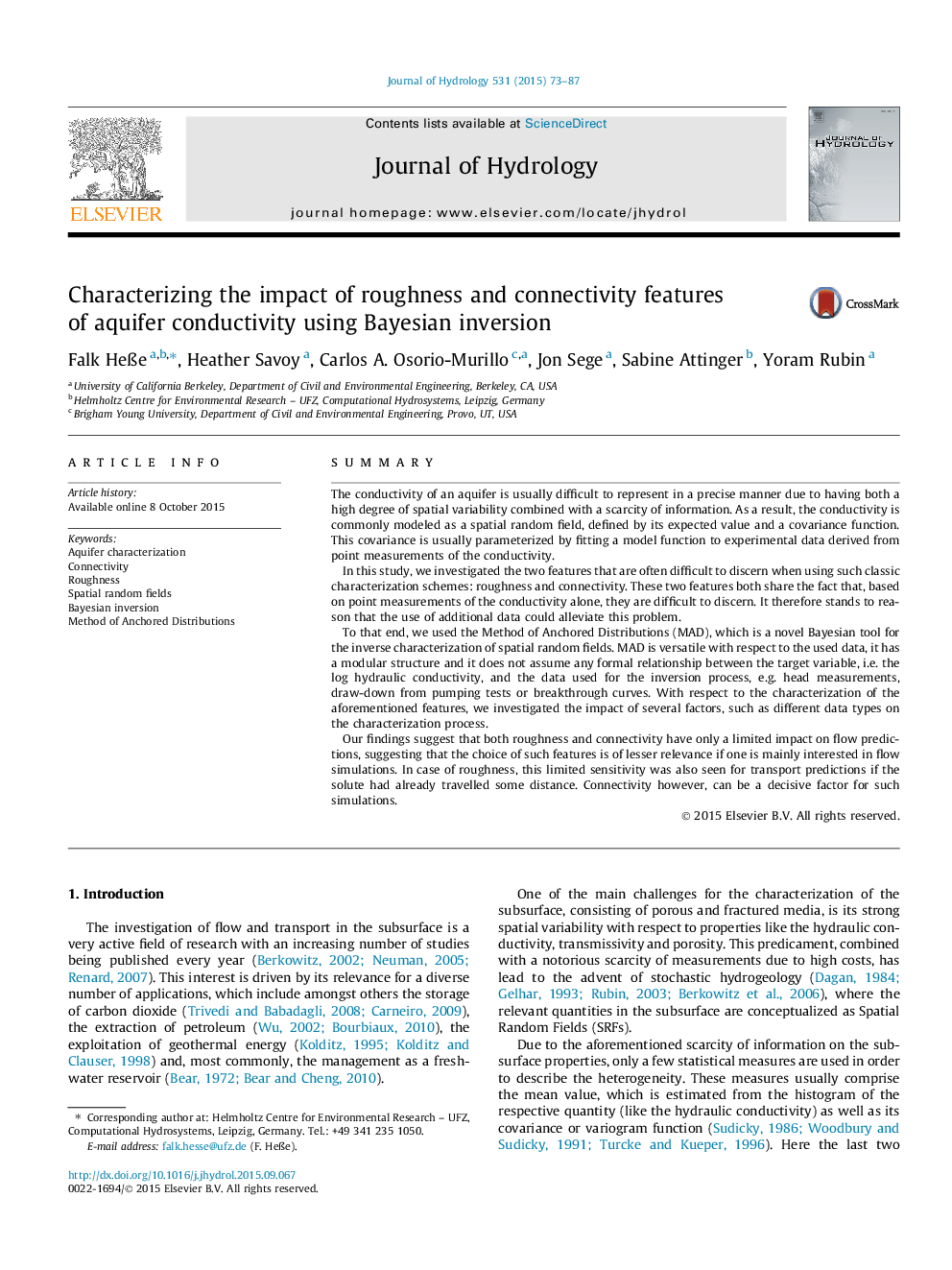| کد مقاله | کد نشریه | سال انتشار | مقاله انگلیسی | نسخه تمام متن |
|---|---|---|---|---|
| 4575881 | 1332880 | 2015 | 15 صفحه PDF | دانلود رایگان |

• We assess the impact of roughness and connectivity features of hydraulic conductivity.
• Several different data types are used for this assessment.
• In general, roughness has only a limited impact on flow as well as transport data.
• Connectivity has likewise only a limited impact on flow data.
• Transport data is more strongly affected by connectivity depending on the type.
SummaryThe conductivity of an aquifer is usually difficult to represent in a precise manner due to having both a high degree of spatial variability combined with a scarcity of information. As a result, the conductivity is commonly modeled as a spatial random field, defined by its expected value and a covariance function. This covariance is usually parameterized by fitting a model function to experimental data derived from point measurements of the conductivity.In this study, we investigated the two features that are often difficult to discern when using such classic characterization schemes: roughness and connectivity. These two features both share the fact that, based on point measurements of the conductivity alone, they are difficult to discern. It therefore stands to reason that the use of additional data could alleviate this problem.To that end, we used the Method of Anchored Distributions (MAD), which is a novel Bayesian tool for the inverse characterization of spatial random fields. MAD is versatile with respect to the used data, it has a modular structure and it does not assume any formal relationship between the target variable, i.e. the log hydraulic conductivity, and the data used for the inversion process, e.g. head measurements, draw-down from pumping tests or breakthrough curves. With respect to the characterization of the aforementioned features, we investigated the impact of several factors, such as different data types on the characterization process.Our findings suggest that both roughness and connectivity have only a limited impact on flow predictions, suggesting that the choice of such features is of lesser relevance if one is mainly interested in flow simulations. In case of roughness, this limited sensitivity was also seen for transport predictions if the solute had already travelled some distance. Connectivity however, can be a decisive factor for such simulations.
Journal: Journal of Hydrology - Volume 531, Part 1, December 2015, Pages 73–87